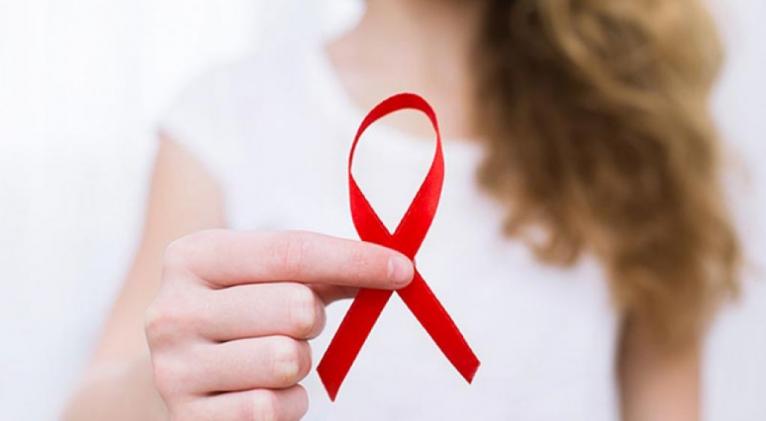Cuba and HIV-AIDS (+ Infographic)
especiales

Many myths have been woven around the human immunodeficiency virus (HIV), which causes AIDS, since it was discovered last century. Actually, it was something unknown, which caused death, and many people showed antihuman reactions towards these patients, especially out of ignorance.
Those who carried the virus and later fell ill were subjected to discrimination, stigmatization, to the brink of the frankly irrational. That's how it was (remember the North American film Philadelphia).
The world panicked, when the factor that caused death was yet unknown.
Since then, science has taken a leap of progress and today - even when a definitive cure hasn’t been found yet- one can live with HIV, live a socially useful life, where family support is essential.
Communities make a difference
However, the behavior of societies has not walked the same path as the scientific field. Therefore this health issue, one of the most widespread and dramatic worldwide still hurts HIV positive patients; that is, those who HIV in their system.
Let’s clarify that bot all HIV positive patients suffer from AIDS. It only indicates that the virus is in your bloodstream and may end up triggering the syndrome.
On the sidelines of modern life, prejudices are still present, which is why the celebration of World AIDS Day, a special moment to raise awareness about the disease and those who suffer from it, becomes especially important every December 1st.
Since 1988, the disease has killed more than 25 million people worldwide.
"Communities make the difference" is the slogan selected worldwide for this 2019.
The international call to celebrate this date highlights that communities contribute to the AIDS response in different ways, ensuring that people remain at the center and that no one is left behind.
It also highlights that in these communities are integrated educators, the networks of people living with HIV or affected by the virus like gays and other men who have sex with men, people who do drugs, sex workers, women and youth, advisors, health workers, civil society organizations and popular activists.
On the other hand, it highlights that every time financing is cut short, which endangers the sustainability of the services. “More than ever before, today it’s necessary the defense lead by communities to ensure that AIDS remains in the political agenda, that human rights must be respected and that those who make decisions and put them into practice take responsibilities”.
Cuba shows the best indicators in the region
In Cuba, since 1986 when the first evidence of the disease appeared, the Cuban State and Government have paid special attention to this problem, which has influenced the prevalence of HIV infection the lowest in Latin America and the Caribbean, and one of the lowest in the Western Hemisphere, with 0.2-0.3% of the population between ages 15-49; also among the lowest in the world.
The previous information, published in Cubadebate, was provided by Barbara Venegas, an official in the STDs, HIV and Hepatitis department, of the National Epidemiology Department of the Ministry of Public Health (MINSAP).
He explained that HIV transmission has been controlled in children under 14, in heterosexual women and men, as well as maternal and child HIV, and congenital syphilis.
By the end of 2018 in Cuba, 25,494 people lived with HIV, and in this year 80% of the cases diagnosed are male, a large number of them have sex with other men (MSM).
The report by Lisandra Fariñas also points out that HIV-AIDS mortality decreases in the country; the 87.3% of patients receive treatment and 87% of them had an early diagnosed.
A huge step forward this year has been decentralizing the diagnosis. “Now all provinces confirm their cases, which enables that samples don’t travel to other territories, human resources, reagents are optimized. There’s greater chance in the diagnosis, and in turn we can give people more treatment and connect them to medical care", said Venegas.
The latest national survey on HIV / AIDS Infection Prevention Indicators (ran in mid-year 2017) and published by the National Office of Statistics and Information indicates that anal sex is one of the sexual practices that entails increased risk of infection as well as the fact of sexual relations between more than two people.
Doctors and specialists report the importance in the systematic use of condom to reduce the risk of HIV infection, a practice that the Cuban population has gradually acquired. However, its availability and presence in drug stores and other places where the population can buy them is necessary.
The Sustainable Development Goals for 2030 also include working to end several epidemics, including AIDS.
On the way to this goal, Cuba has joined the 90-90-90 goals for 2030. That is, 90% of people diagnosed, 90% of them treated, and 90% with the viral suppression.
The challenge of all human beings living with HIV is to adhere to these treatments. It’s a chronic, transmissible disease, but with which you can live fully.














Add new comment